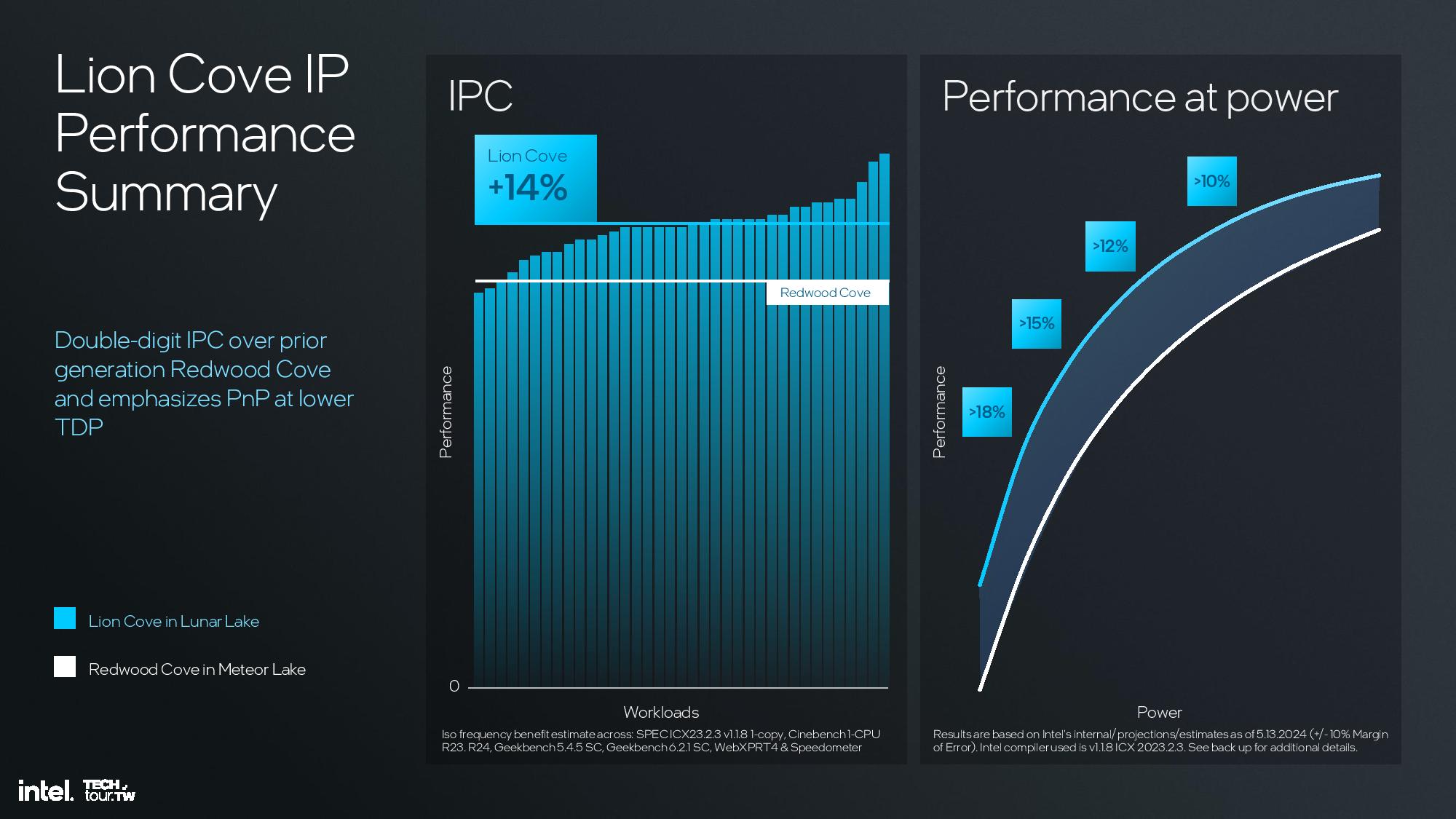Intel unwraps Lunar Lake architecture: Up to 68% IPC gain for E-cores, 14% IPC gain for P-Cores
Rearchitecting for power and performance.
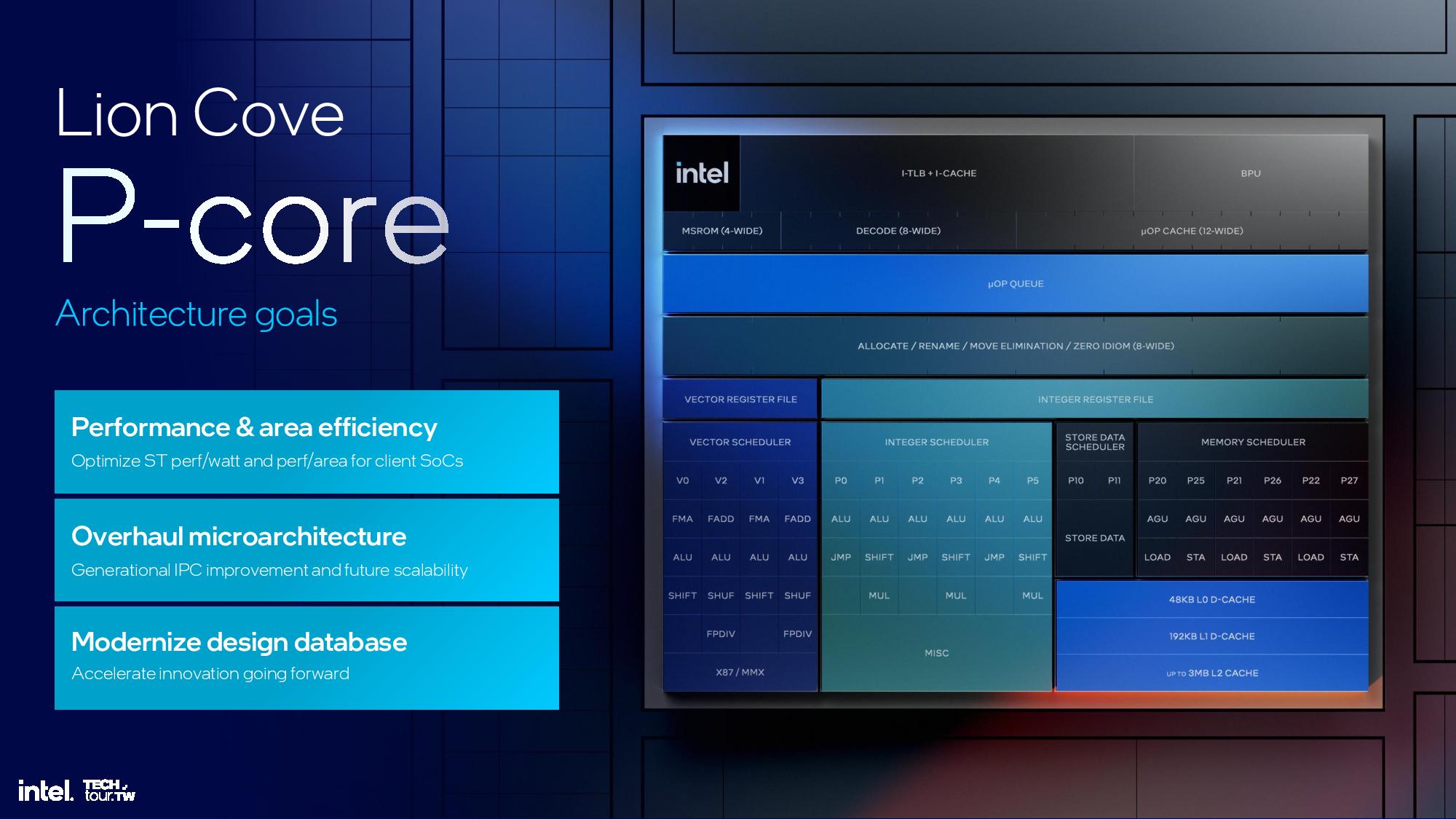
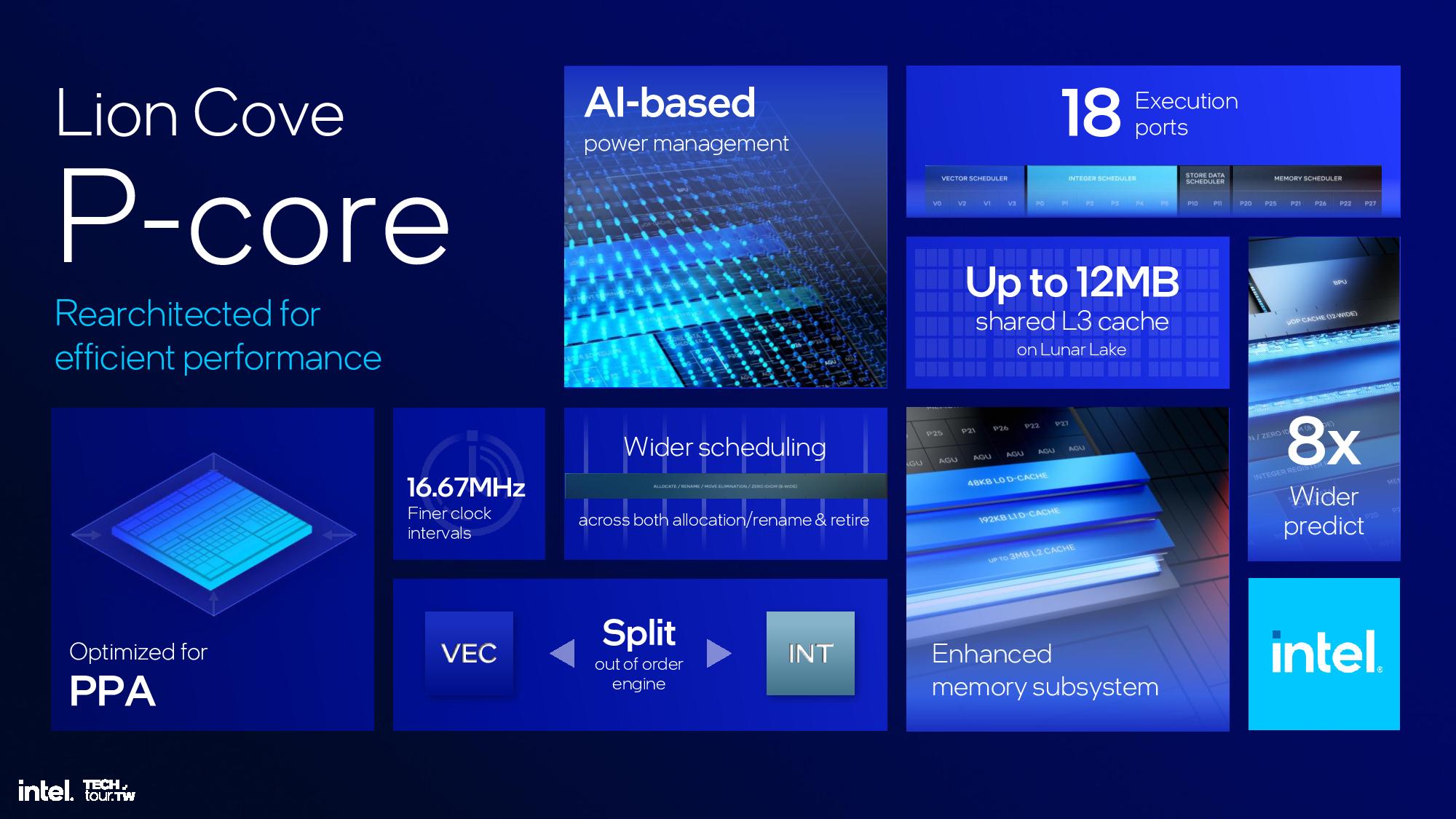
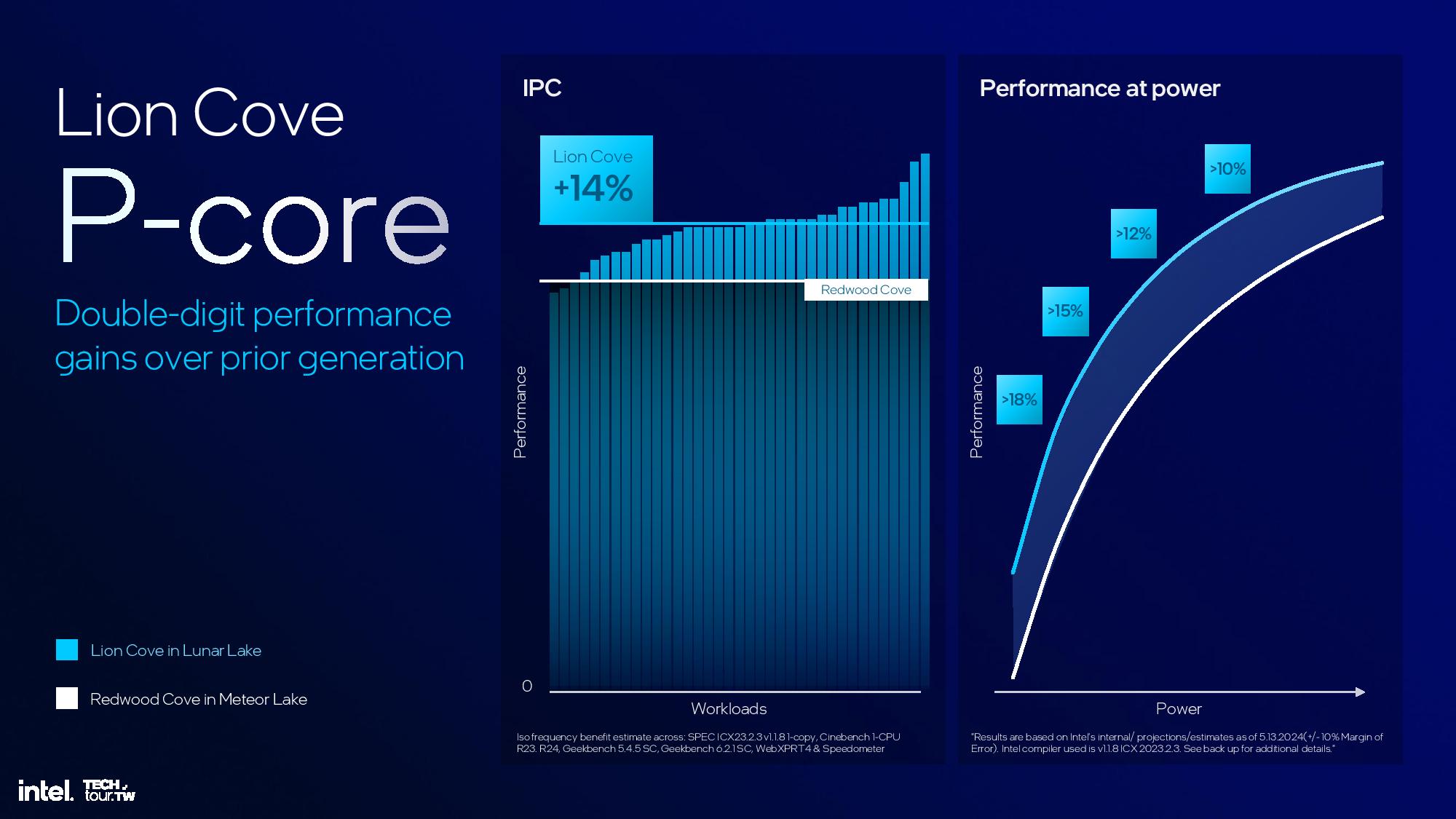
Lunar Lake’s P-cores deliver a 14% average gain in IPC (Instructions Per Cycle), which floats all boats in terms of performance. However, Intel took an unexpected turn in optimizing the cores for a hybrid architecture by removing hyperthreading and all the logic blocks that enable that performance-boosting feature.


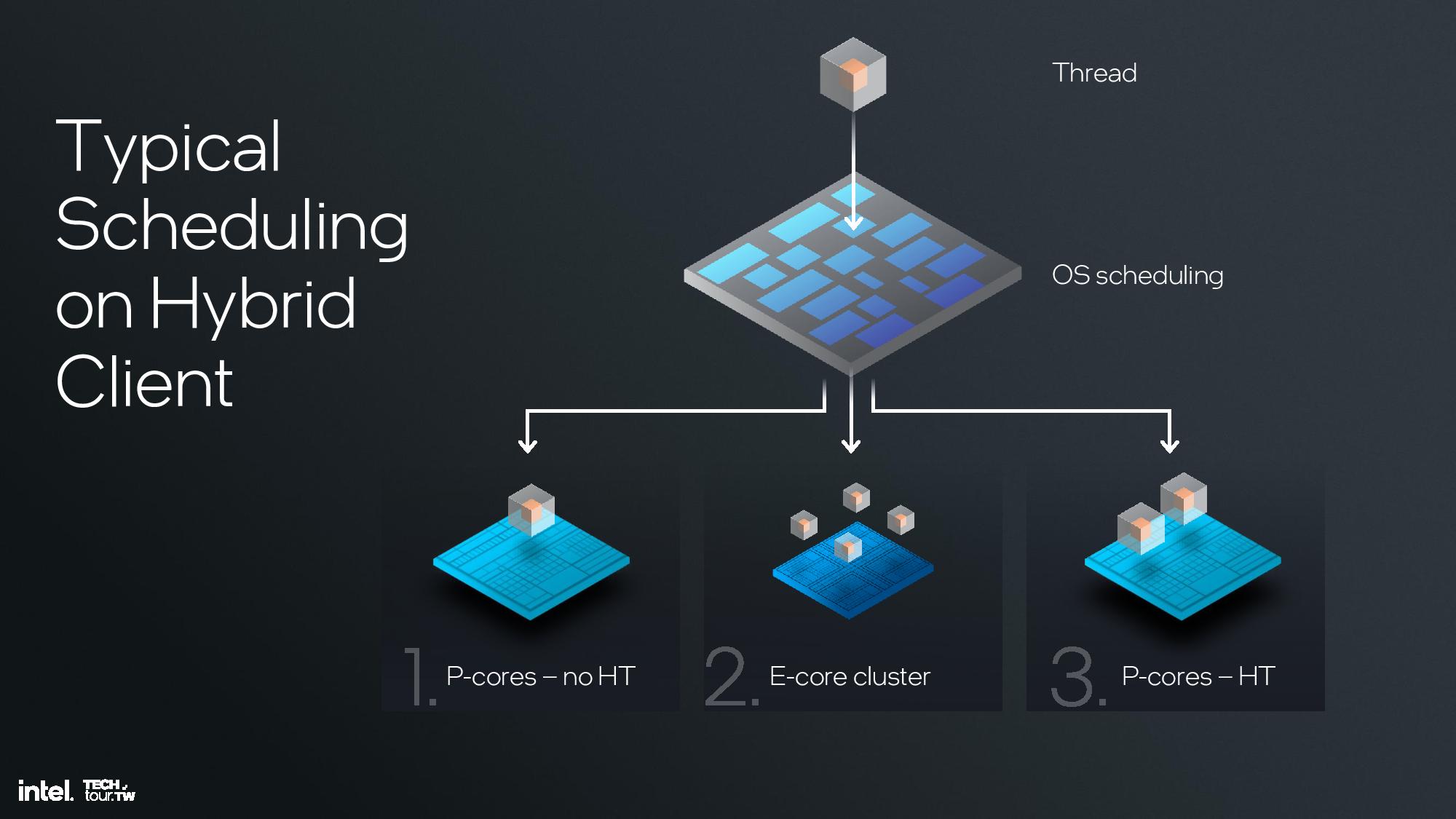

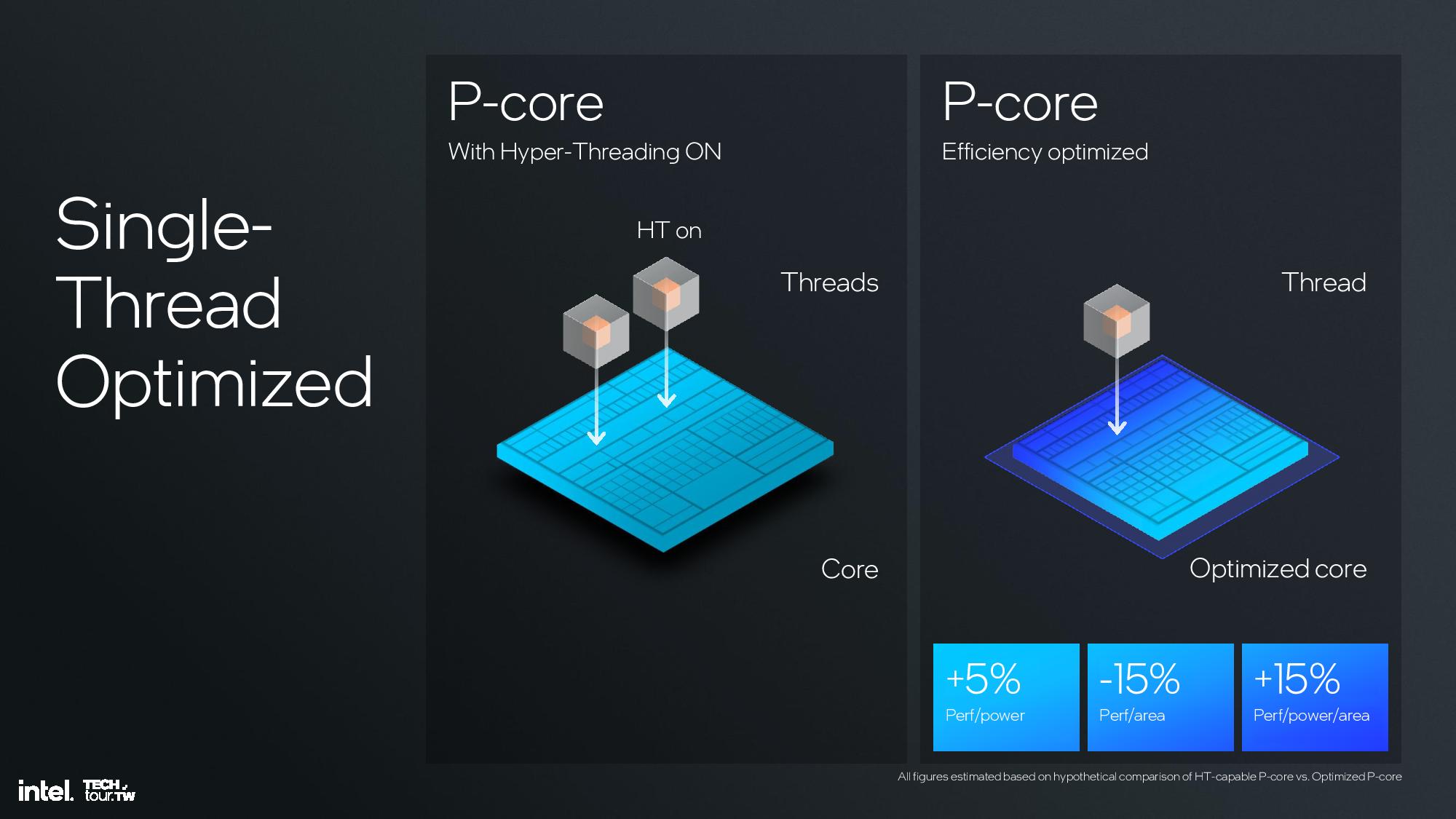


Intel’s architects concluded that hyperthreading, which boosts IPC by ~30% in heavily threaded workloads, isn’t as relevant in a hybrid design that leverages the more power- and area-efficient E-cores for threaded workloads. In fact, threads were typically scheduled into all P-cores first without leveraging the extra threads on the cores, and then spilling additional threads spill over to the E-cores. Only after the E-cores were saturated did additional threads begin to get scheduled into the extra threads available on the P-cores.
Removing the dedicated fairness mechanisms and extra security features required for hyperthreading makes the core leaner, delivering a 15% increase in performance efficiency, 10% increase in performance per area, and a 30% improvement in performance per power per area. This was much more effective than merely disabling hyperthreading while leaving the control circuitry present, as shown in the measurements in the last slide above. The new approach also preserves die area for other additives, like more E-cores or GPU cores.
Intel isn’t discarding hyperthreading for all use-cases — it still sees tremendous value in P-core-only designs. As such, Intel architected two versions of the Lion Cove core, one with and one without hyperthreading, so that the threaded Lion Cove core can be used in other applications, like we see in the forthcoming Xeon 6 processors.
Lion Cove also marks a shift from pre-defined static settings for various operating conditions, such as assigning certain points on the voltage/frequency curve for different thermal and power thresholds. It now uses an AI self-tuning controller to dynamically adapt in a more intelligent manner. Intel’s clock frequencies also used to only be adjustable in 100 MHz increments (bins) but are now tunable in 16.67 MHz bins to provide more fine-grained frequency and power control. Intel credits this with single-digit percentage increases in either power efficiency or performance in some scenarios, and every bit counts in an efficiency-first architecture.
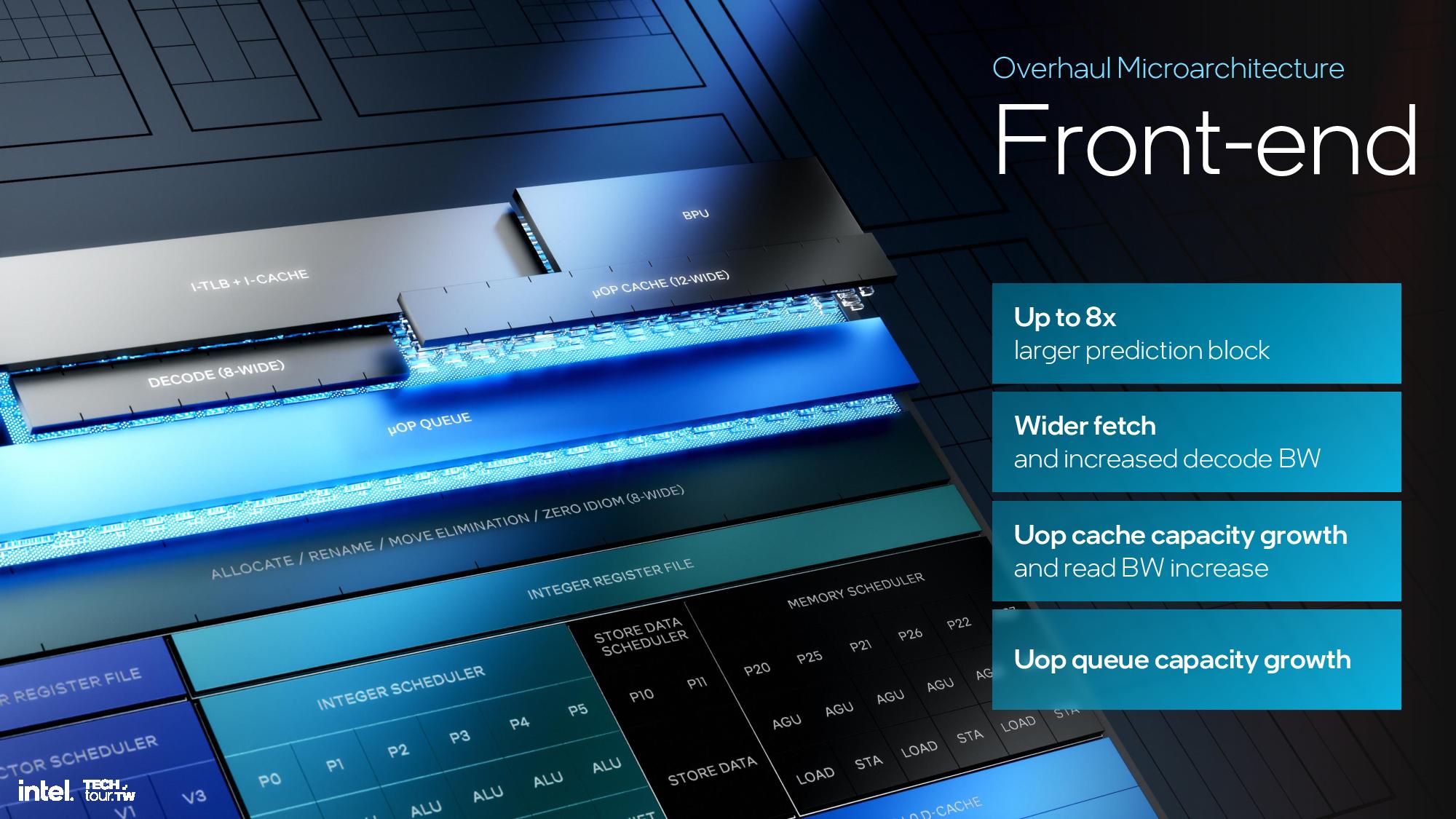
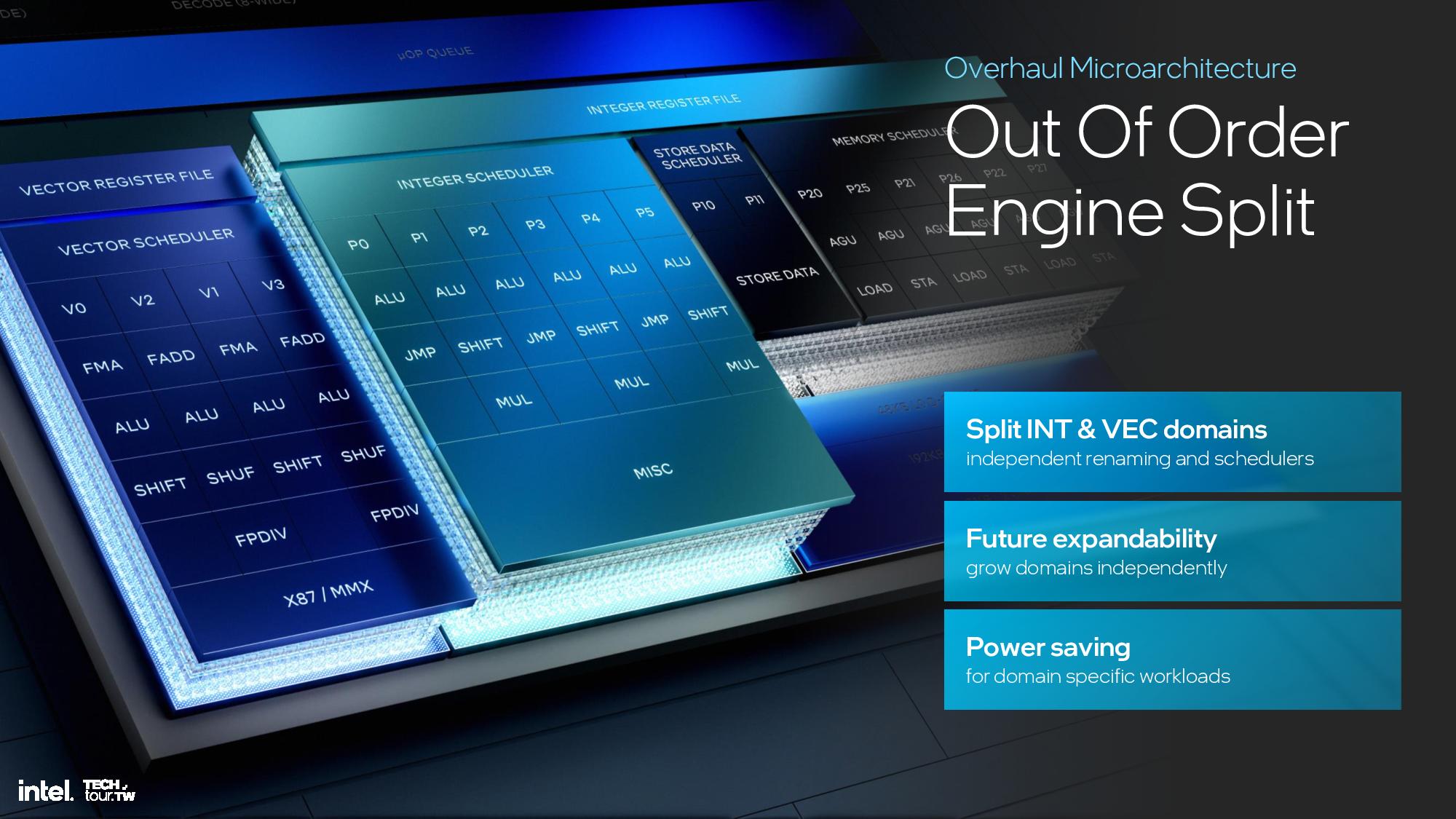

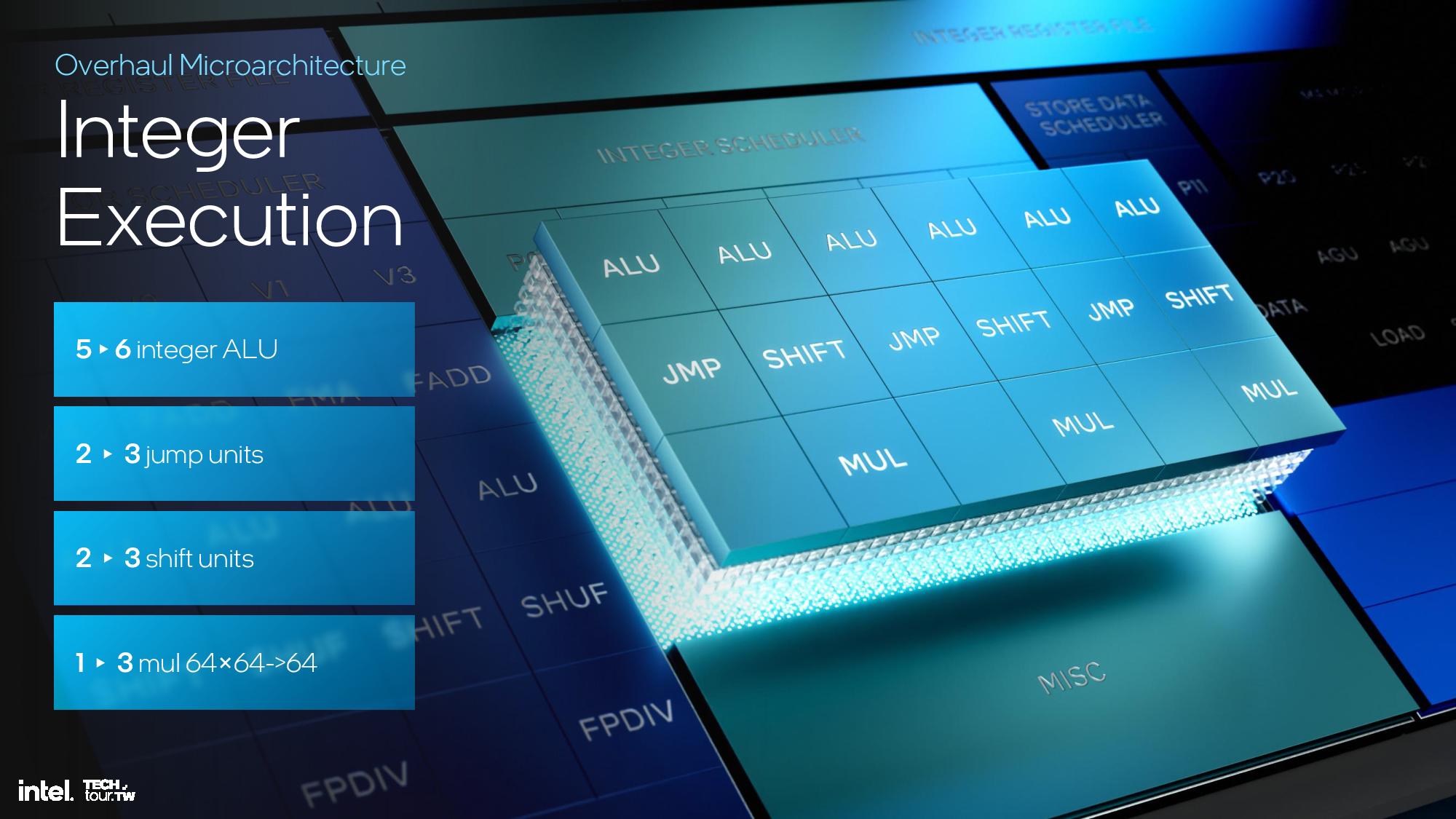

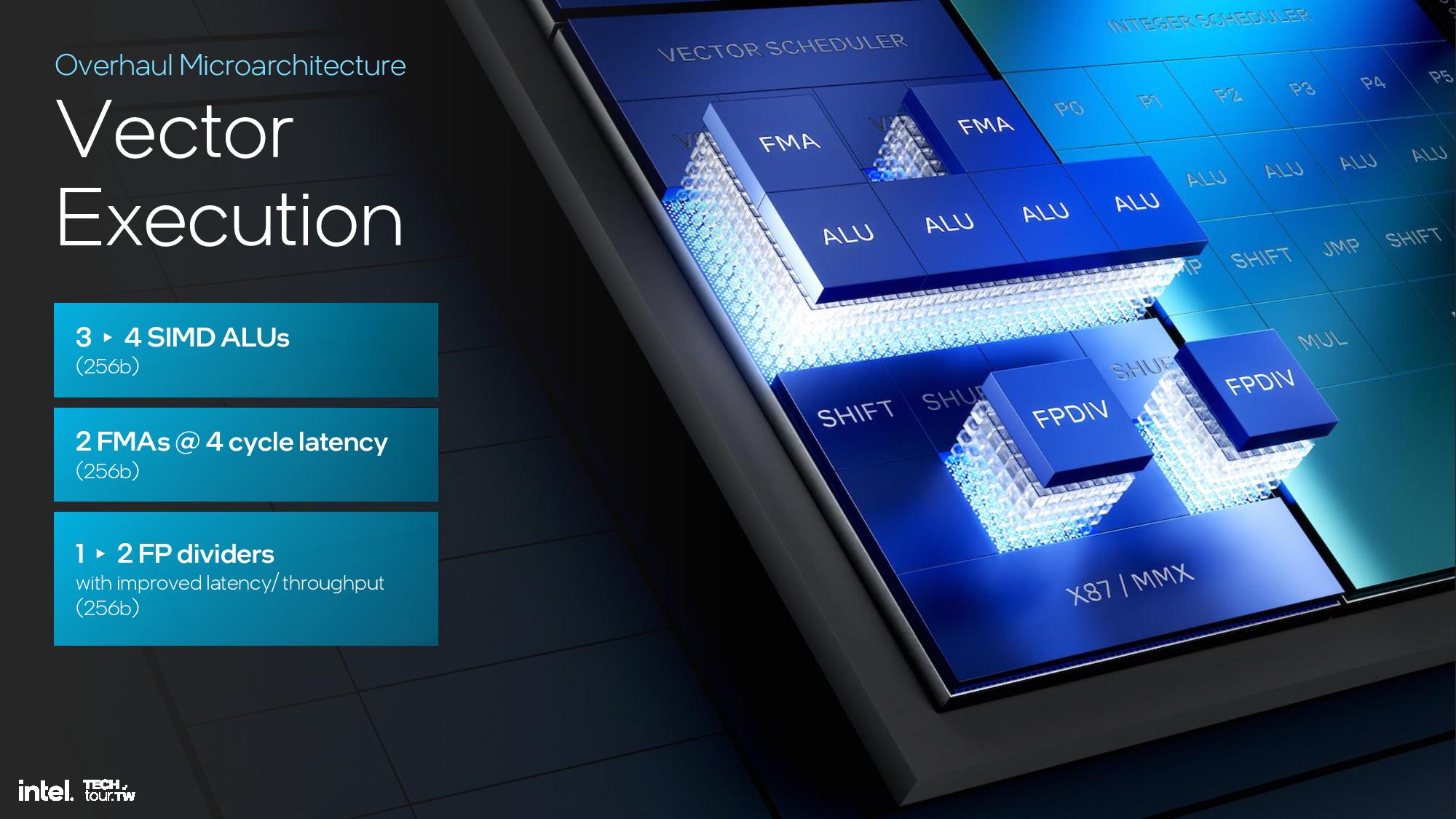
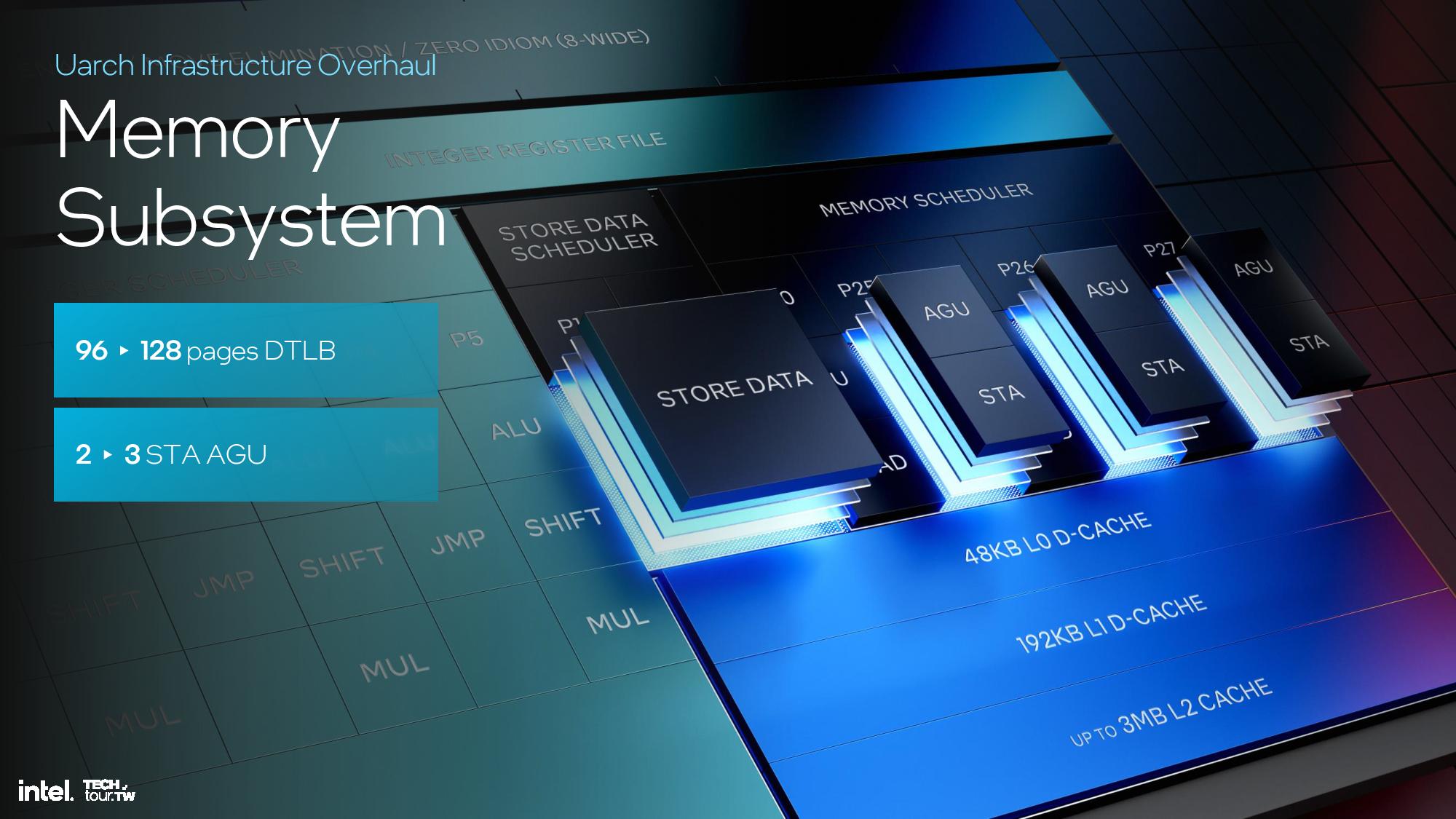
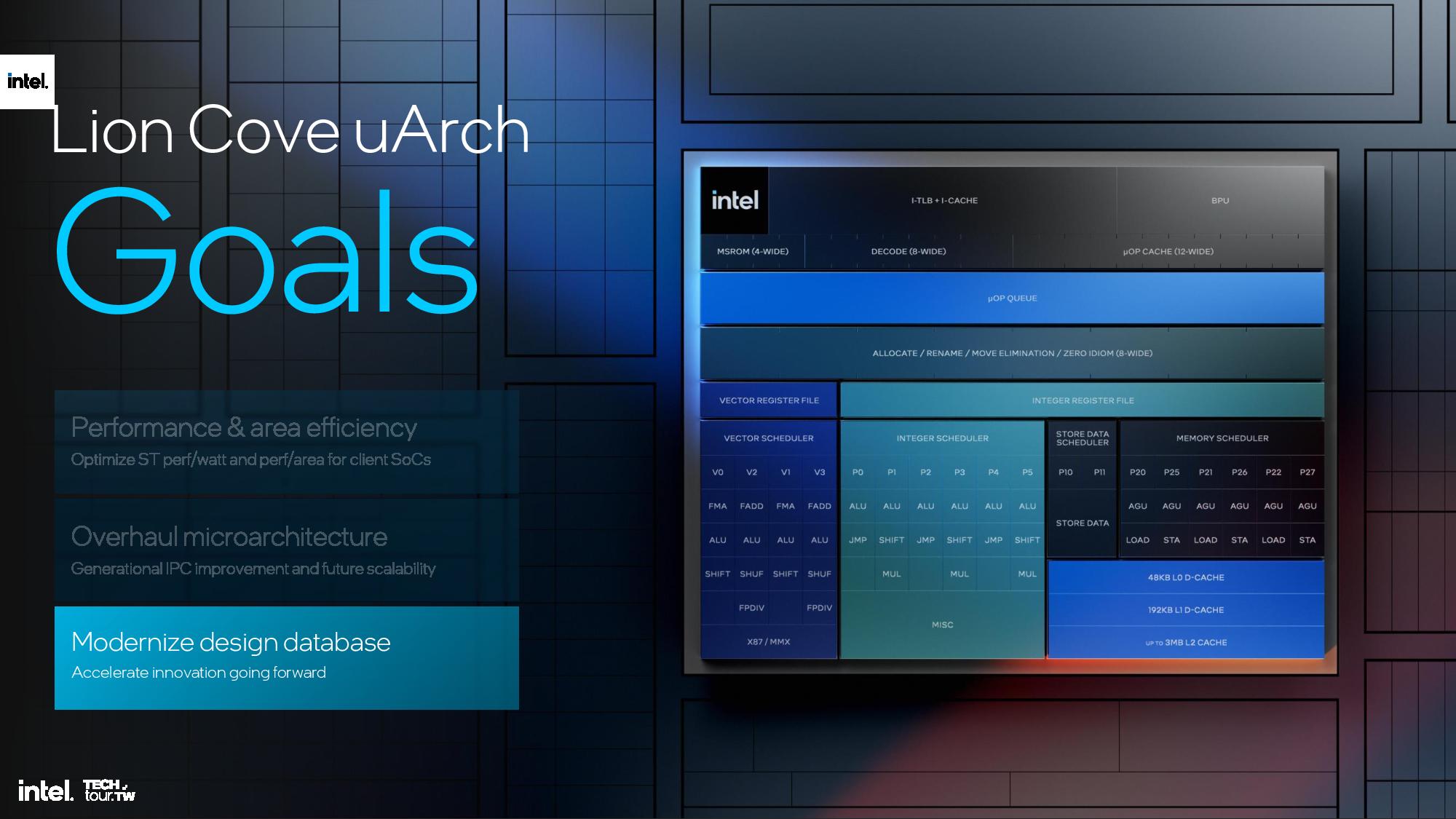
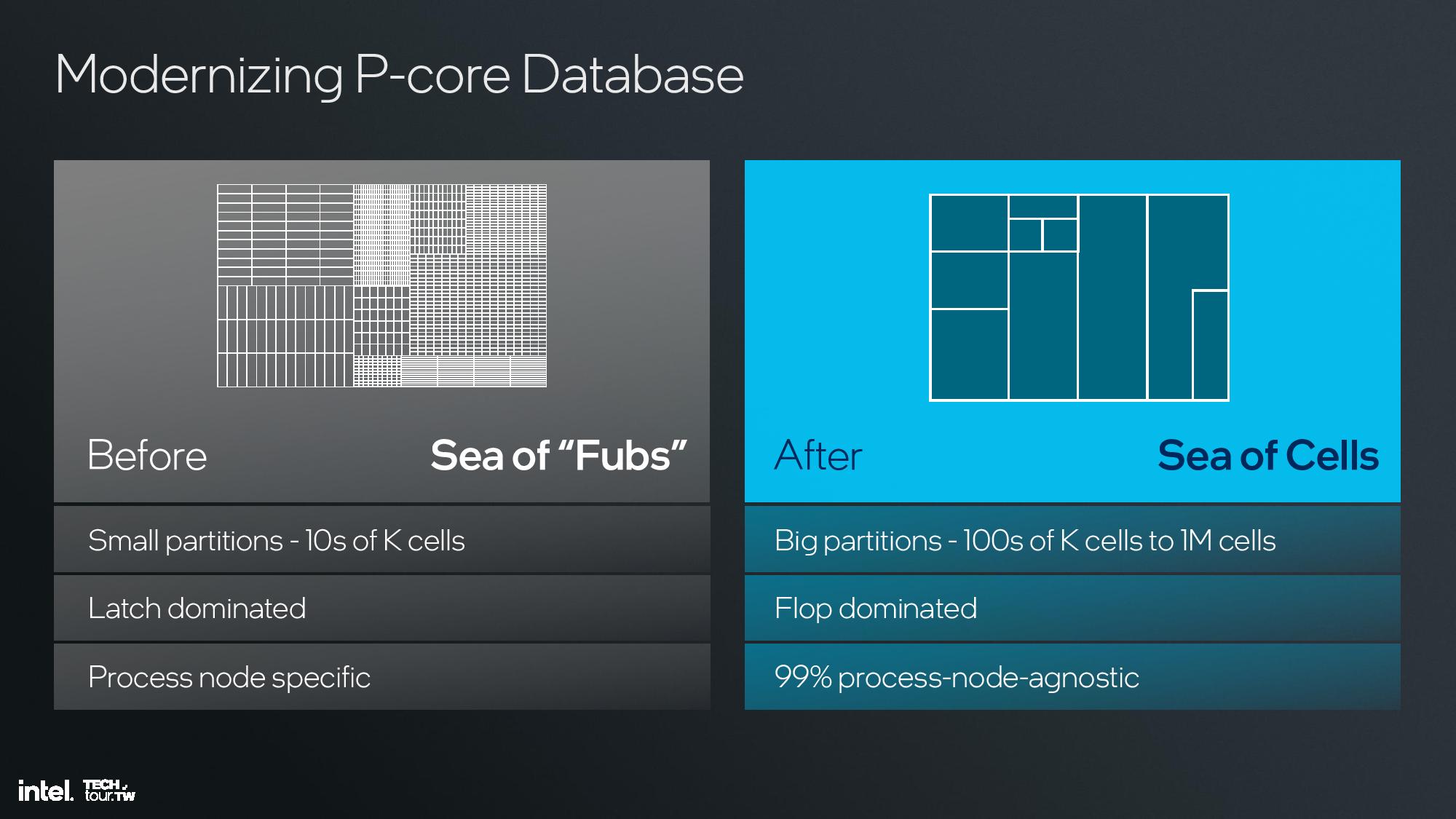
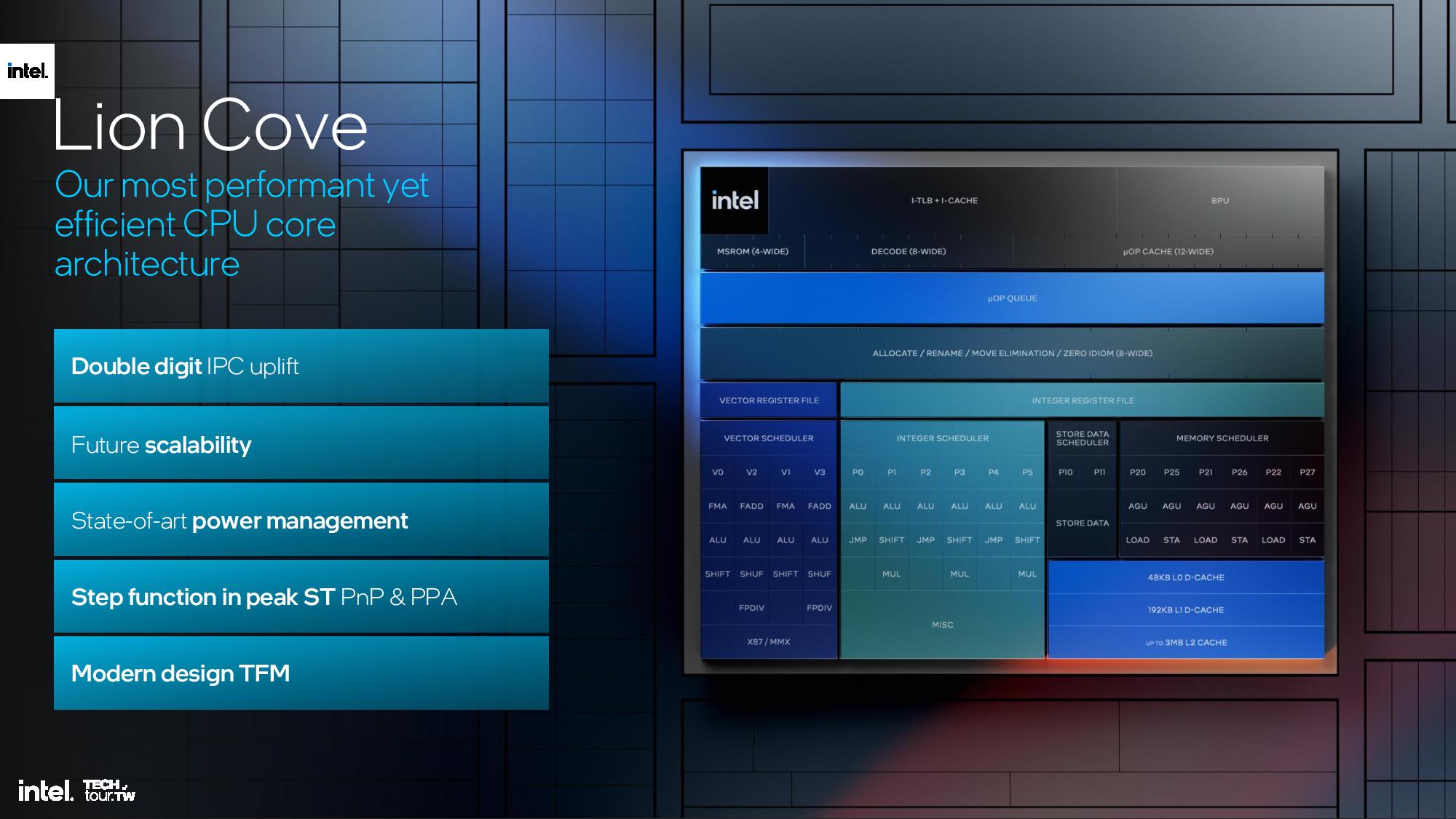
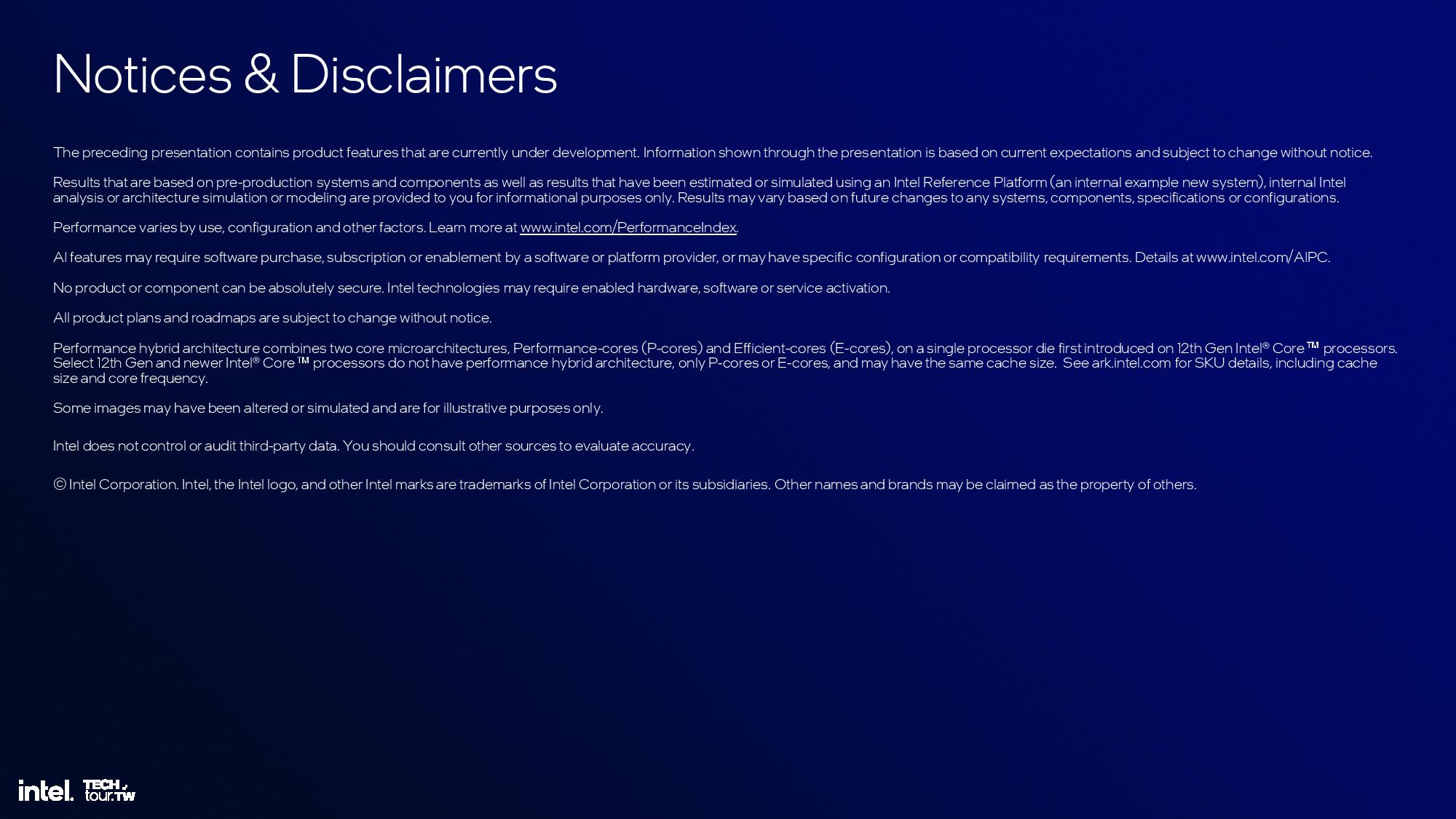
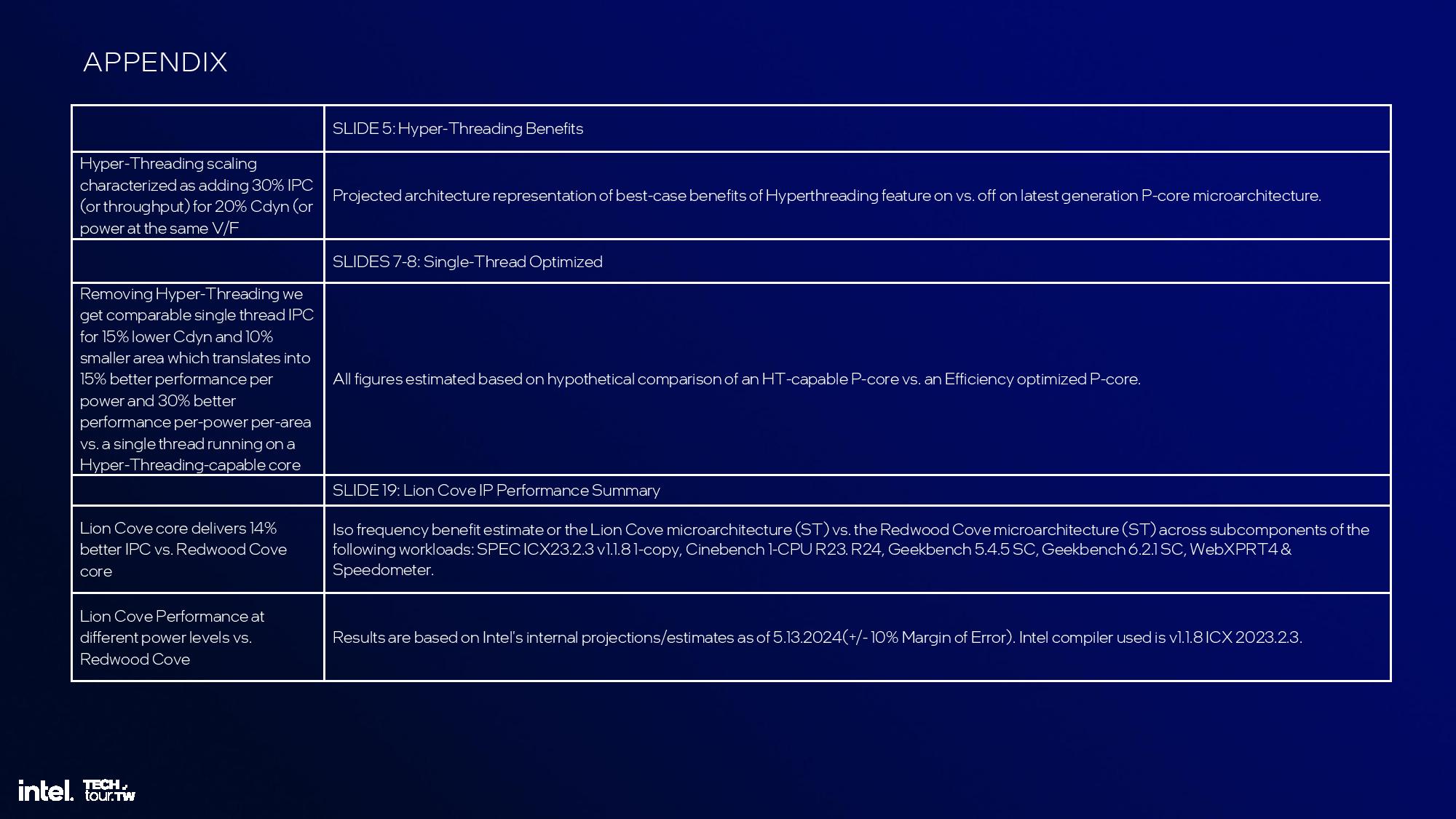
The front end of the microarchitecture fetches x86 instructions and decodes them into microoperations to feed the out of order execution engine. The goal is to saturate the out of order part of the engine to prevent stalls, and that requires fast and accurate branch prediction.
Intel says it widened the prediction block by 8X over the previous architecture while maintaining accuracy. Intel also tripled the request bandwidth from the instruction cache to the L2 and doubled the instruction fetch bandwidth from 64 to 128 bytes per second. Additionally, decode bandwidth was bumped up from 6 to 8 instructions per cycle while the micro-op cache was increased along with its read bandwidth. The micro-op queue was also increased from 144 entries to 192 entries.
Previous P-core architectures had a single scheduler to dispatch instructions across the execution ports, but the design incurred hardware overhead and scalability issues. To address these issues, Intel split the out of order engine into integer and vector domains with independent renamers and schedulers to increase flexibility. A range of improvements were also made to the retirement, instruction window, and execution ports, along with other improvements to the integer and vector execution pipelines (listed in the slides).
The memory subsystem has a new L0 cache level. The architects completely redesigned the data cache to add a 192KB tier between the existing L1 and L2 caches. This resulted in renaming the existing L1 as L0. Ultimately this decreases the average load-to-use time, which increases IPC, and enables increasing the L2 cache capacity without latency sacrifices due to the increased capacity. As a result, L2 cache grows to 2.5MB on Lunar Lake and 3MB on Arrow Lake (they both use Lion Cove for the P-cores).
Intel also switched from using proprietary design tools to industry-standard tools optimized for its use. Intel’s old architectures were designed with “Fubs” (functional blocks) of tens of thousands of cells consisting of manually drawn circuits, but it has now moved to using big, synthesized partitions of hundreds of thousands to millions of cells. The removal of the artificial boundaries improves design time, increases utilization, and reduces area.
This also allowed for the addition of more configuration knobs into the design to spin off customized SoC-specific designs faster, with the lead architect saying this allows for more customization between the cores used for Lunar Lake and Arrow Lake. This design methodology also makes 99% of the design transferable to other process nodes, a key advance that prevents the stumbles we’ve seen in the past where intel’s new architectures were delayed by massive process node delays (as with 10nm, for instance).
The end result of the changes is a 14% increase in IPC at a fixed clock rate over the previous-gen Redwood Cove architecture used in Meteor Lake. Intel also points to overall performance improvements that range from 10% to 18% over Meteor Lake depending upon the operating power of the chip. Notably, these power/performance improvements are based on projections/estimates, so Intel has given itself a +/- 10% margin of error for the metrics on the ‘performance at power’ chart.
Get Tom's Hardware's best news and in-depth reviews, straight to your inbox.
Current page: Intel Lunar Lake ‘Lion Cove’ P-core Microarchitecture
Prev Page Lunar Lake SoC Overview Next Page Intel Lunar Lake ‘Skymont’ E-core Microarchitecture
Paul Alcorn is the Editor-in-Chief for Tom's Hardware US. He also writes news and reviews on CPUs, storage, and enterprise hardware.
-
dimar I'd like to see extensive power consumption/performance benchmarks for the next gen. Intel, AMD, ARM CPUs and how slower and faster SSDs affect the battery life.Reply -
cyrusfox Fascinating the disparity in improvement between Floating point vs integer single thread uplift. Huge FP uplift! Eye popping improvements!!! That is lame though, comparing to the gimped e-cores...Reply
but the comparisons are once again being made to the low-power Meteor Lake E-core instead of the full E-core
iGPU uplift is looking really solid, this seems to check all the boxes of what I need in a device. For toting around I really don't need 24+ cores, 8 is plenty and with this much GPU as well as hopefully maturing platform. Excited to see the products and where the pricing lands. Hope Framework gets a flavor of this. -
jenci8888 68% ipc gain e-core? That doesn't seem right... I think they meant 68% gain e-core on specfp. It should be 30% ipc around.Reply -
usertests Reply
They also compare it to Raptor Cove, and if I'm reading it right, claim +2% IPC over that. With the caveat repeatedly mentioned in the article that Intel is giving itself a 10% margin of error.cyrusfox said:That is lame though, comparing to the gimped e-cores... -
thestryker Well it seems we have an answer regarding HT and that is it depends. It'll be interesting to see which version of the Lion Cove desktop ARL uses. I wouldn't be surprised if mobile ARL went without HT, but it seems like desktop could probably keep it even though they emphasize hybrid when referring to dropping it.Reply
Will be looking forward to seeing real world performance on LNL and ARL.
Just a guess based upon the testing Chips and Cheese did on the MTL LP E-cores removal from the ring bus and thus the L3 cache can have an outsized impact on performance. This would in theory be the closest comparison to an existing product.cyrusfox said:That is lame though, comparing to the gimped e-cores... -
Giroro I think cheap Mini PCS using Intel's N100 all E-core processor are a perfectly usable office machine for many people, and I would love to see those upgraded with the new E cores.Reply
That said, I would never buy one, because they would definitely spec those machines with a worthless amount of non-upgradeable memory.
One of the major features adding value of the N100 machines, is that you can usually upgrade the RAM.
Now for the high end Lunar Lake products... There is no high end. If Intel doesn't convince manufacturers to keep ultrabooks with the highest available configuration under $1200, then they're going to have a problem -
Evildead_666 Can people please stop using the word Architect as a verb please ?Reply
"Redesigned" would have been perfect for this article.
Architected or Rearchitected do not exist.
Cheers. -
Dragos Manea Reply
That would to similar with the article from which they copied and pasted, they had to change some words even if it is with words that does not exist.Evildead_666 said:Can people please stop using the word Architect as a verb please ?
"Redesigned" would have been perfect for this article.
Architected or Rearchitected do not exist.
Cheers. -
bit_user Reply
This is based on a somewhat biased performance comparison (see below).The article said:38% and 68% IPC gains in the new Skymont architecture.
Initially, I missed what you probably meant by "gimped". As I see @thestryker has pointed out, comparing to the LP E-cores is indeed quite lame of them, since its lack of L3 cache has been shown to disadvantage it relative to the Crestmont cores on Meteor Lake's CPU tile.cyrusfox said:Fascinating the disparity in improvement between Floating point vs integer single thread uplift. Huge FP uplift! Eye popping improvements!!! That is lame though, comparing to the gimped e-cores...
Dang. I was really excited for a minute, there.
: ( -
bit_user Reply
Yeah, they seem to be somewhere around the performance of a Sandybridge or Haswell i5, which is still pretty usable. Of course, their iGPU is much better than those CPUs'.Giroro said:I think cheap Mini PCS using Intel's N100 all E-core processor are a perfectly usable office machine for many people, and I would love to see those upgraded with the new E cores.
You can find some that take a DDR5 SO-DIMM. I have 32 GB in my N97 machine. It doesn't need that much, but I did it just to get dual-rank, for the small performance boost it provides.Giroro said:That said, I would never buy one, because they would definitely spec those machines with a worthless amount of non-upgradeable memory.
One of the major features adding value of the N100 machines, is that you can usually upgrade the RAM.
